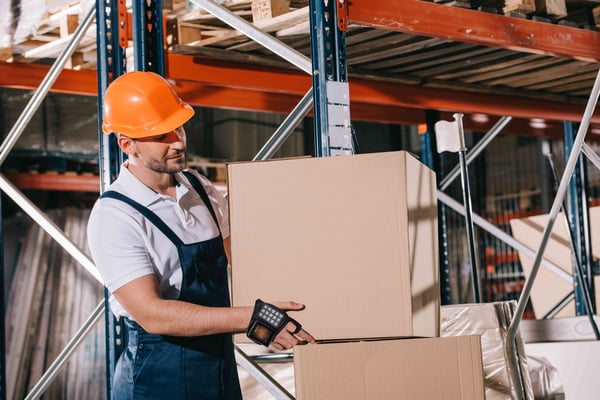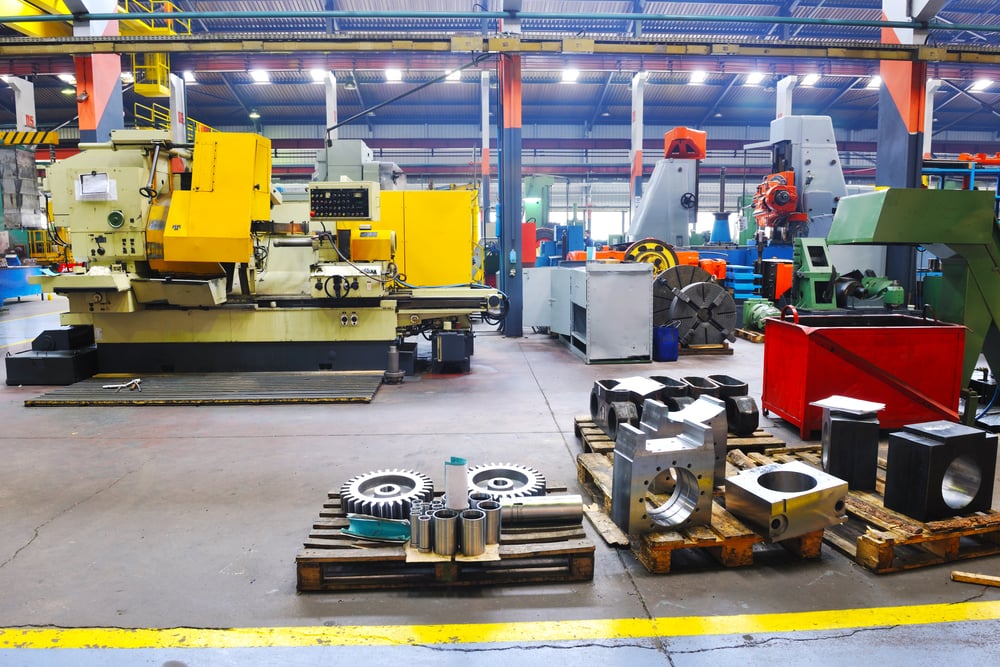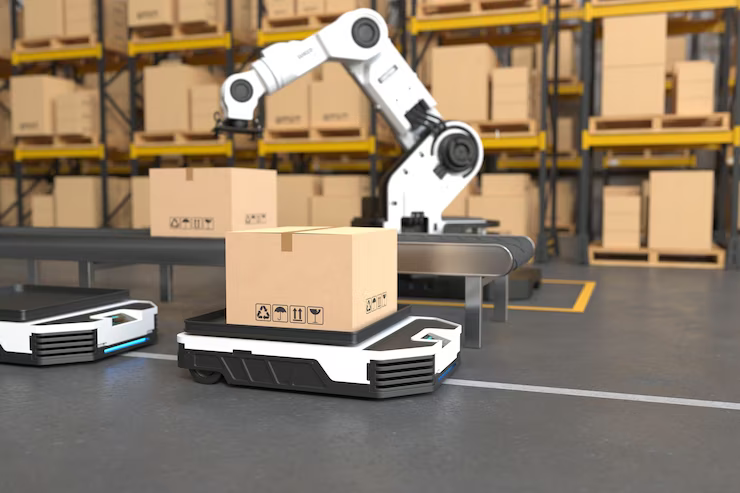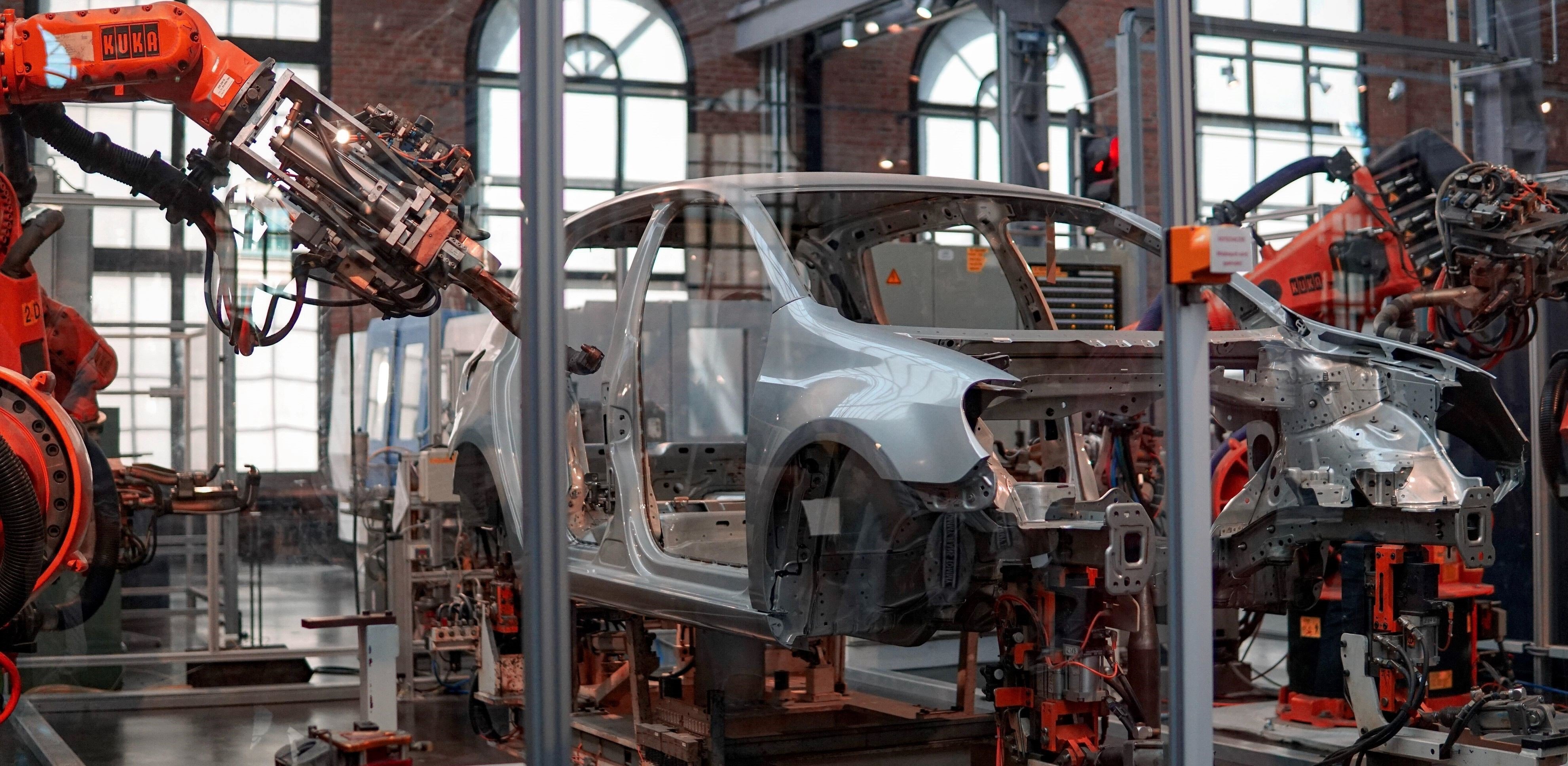2 min read
3 Automation Trends in the Automotive Industry
1. 3D Printing In the automotive industry, additive manufacturing, also known as 3D printing, is becoming more common. What was once confined to...
3 min read
Ömer Ali Güneş
:
Jul 12, 2023 12:58:00 PM
Imagine a bustling warehouse where robots gracefully glide between towering shelves, swiftly picking and packing products with remarkable precision. This is not the warehouse of the distant future—it's the warehouse of today!
Automation and robotics have taken center stage, revolutionizing the logistics industry and redefining the way we store, manage, and distribute goods.
In this blog post, we will embark on a captivating journey into the future of warehousing, where cutting-edge technologies drive unparalleled efficiency, propel last-mile delivery to new heights, and reshape the very nature of work itself.
Get ready to witness the extraordinary fusion of innovation and logistics that is transforming the world of warehousing.
1. The Rise of Automation in Warehousing
A. Enhanced Efficiency and Productivity
B. Order Fulfillment Optimization
C. Inventory Management and Tracking
2. Robotics in Last Mile Delivery
A. Drones and Autonomous Vehicles
B. Mobile Robots for Last Mile Delivery
3. The Impact on the Workforce
A. New Job Roles and Skill Requirements
B. Collaboration Between Humans and Robots
4. Challenges and Considerations
B.Ethical and Social Implications
RELATED:
4 KEY FACTORS OF CHOOSING AN AUTOMATION SYSTEM FOR WAREHOUSES
1. The Rise of Automation in Warehousing
A. Enhanced Efficiency and Productivity
Automation technologies such as automated guided vehicles (AGVs) and conveyor systems are streamlining warehouse operations. AGVs can transport goods autonomously, reducing the need for manual labor and eliminating time-consuming tasks.
According to a study by MHI, 64% of surveyed companies experienced increased productivity and efficiency through the use of automation in their warehouses.
B. Order Fulfillment Optimization
Robotic picking systems, such as autonomous mobile robots (AMRs) and robotic arms, are revolutionizing order fulfillment processes. These robots can navigate through the warehouse, locate items, and pick them up with precision and speed.
Ocado, a UK-based online grocer, employs a sophisticated robotic picking system that has increased their productivity by 50%, reducing errors and improving customer satisfaction.
C. Inventory Management and Tracking
Automated systems utilizing RFID (Radio Frequency Identification) and barcode scanning are becoming standard in warehouses. They enable real-time inventory tracking, accurate stock management, and faster cycle counting.
Amazon's fulfillment centers employ robots equipped with vision systems that scan barcodes and track inventory movements, allowing for efficient storage and retrieval of products.
Most of logistics companies have already implemented the accurate barcode scanning system into their warehouse operations. Thread in Motion's smart gloves allows for hands-free barcode scanning in key operations such as picking, packaging, and sorting.
The latest addition to Thread in Motion's barcode scanning mini hand computers VEGA and VEGA-X are taking the automation and inventory management levels to the next level by combining hands-free barcode scanning and image recognition.

The latest barcode scanning mini hand computers VEGA & VEGA-X help logistics companies to increase the efficiency of their warehouse operations by up to 50%.
2. Robotics in Last-Mile Delivery
A. Drones and Autonomous Vehicles
The use of drones and autonomous delivery vehicles is transforming the last-mile delivery process. These technologies offer faster and more cost-effective solutions for delivering packages to customers.
In 2020, Alphabet's subsidiary, Wing, conducted a pilot program in Christiansburg, Virginia, delivering goods via drones. The program demonstrated the potential for quick, contactless delivery in suburban areas.
B. Mobile Robots for Last-Mile Delivery
Mobile robots, such as sidewalk delivery robots, are gaining popularity for last-mile delivery in urban environments. They navigate sidewalks and crosswalks autonomously, ensuring safe and efficient delivery.
Starship Technologies, a company specializing in delivery robots, has successfully implemented its robots in several cities, providing convenient and eco-friendly delivery options.
3. The Impact on the Workforce
A. New Job Roles and Skill Requirements
With the implementation of automation and robotics, the nature of jobs in the warehousing industry is evolving. There is a shift towards roles that require technical expertise in operating and maintaining robotic systems.
According to the World Economic Forum, the demand for skilled workers in robotics and automation is expected to increase by 15% by 2025.
B. Collaboration between Humans and Robots
Rather than replacing human workers, automation and robotics are augmenting their capabilities. Collaborative robots, also known as cobots, work alongside humans, assisting in physically demanding or repetitive tasks.
Adidas has implemented robots in their warehouses to help workers with tasks like picking and packing, improving overall efficiency and reducing the risk of injuries.

4. Challenges and Considerations
A. Cost and Implementation
While automation and robotics offer numerous benefits, the initial investment can be a significant hurdle for businesses. Costs associated with equipment, integration, and training need to be carefully considered.
However, over time, the return on investment (ROI) from increased productivity, reduced errors, and improved customer satisfaction can justify the initial expenditure.
B. Ethical and Social Implications
The rise of automation and robotics raises concerns about potential job displacement and the impact on the workforce. Addressing these concerns requires proactive measures such as reskilling and upskilling programs for employees.
Governments and organizations need to work together to ensure a smooth transition and support affected workers during this transformative period.
RELATED:
SMART FACTORY TRANSFORMATION | WHY YOU NEED TO START YOURS NOW
Conclusion
The future of warehousing is being shaped by automation and robotics. These technologies offer enhanced efficiency, optimized order fulfillment, and improved inventory management.
In last-mile delivery, drones, autonomous vehicles, and mobile robots are revolutionizing the way packages reach customers.
While there are challenges and considerations, the collaboration between humans and robots presents a promising future for the logistics industry.
By embracing automation and robotics, businesses can unlock new levels of productivity, accuracy, and customer satisfaction in the evolving world of warehousing.
RELATED:
DIGITAL WAREHOUSING TO MODERNIZE YOUR SUPPLY CHAIN MANAGEMENT

2 min read
1. 3D Printing In the automotive industry, additive manufacturing, also known as 3D printing, is becoming more common. What was once confined to...

Finally, you have your own eCommerce business you’ve always wished for, and you decided to implement an automation system for your warehousing...

As technological advancements allow machines and humans to communicate more effectively, more companies will become automated. Here are five reasons...